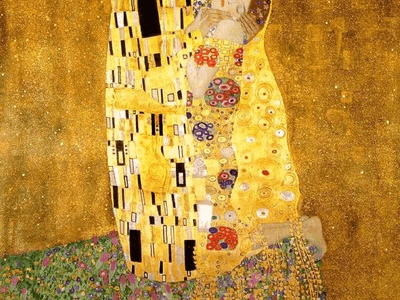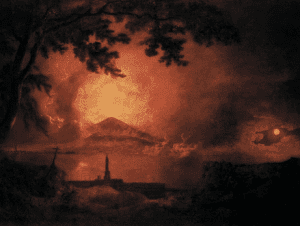Title of Artwork: “The Kiss”

Artwork by Gustav Klimt
Year Created 1907 – 1908
Summary of The Kiss
During his “Golden Period,” from 1907 to 1908, Austrian Symbolist painter Gustav Klimt created The Kiss, an oil painting that features silver and gold leaf.
In the artwork, a couple embraces, their bodies entangled in robes embroidered in a complex style that draws from both the organic shapes of the previous Arts and Crafts movement and the contemporary Art Nouveau style.
The Austrian Gallery Belvedere in Vienna’s Belvedere Palace houses the picture, which is regarded as a masterpiece of the early modern era. As Klimt’s most well-known piece, it is a symbol of the Viennese Art Nouveau movement known as the Jugendstil.
All About The Kiss
Many of Gustav Klimt’s paintings feature themes of romantic or sexual attraction. Klimt’s emphasis on couplehood is on display in works like the Stoclet Frieze and the Beethoven Frieze. The motif of a kissing pair appears in each of these pieces before it appears in The Kiss.
The common assumption is that Klimt and his lover Emilie Flöge posed for the painting, however there is no documentation or proof of this. She looks strikingly similar to the model in his Woman with feather boa, Goldfish, and Dana, leading some to speculate that the woman was ‘Red Hilda.
They are shown in an embrace by Gustav Klimt against a flat gold background. The couple is standing on the edge of a beautiful field that terminates at the woman’s bare feet.
The man’s robe is covered in delicate swirls and geometric shapes. She wears a floral crown, and he wears a crown of vines. She is depicted wearing a free-flowing garment with floral patterns.
The man’s face is hidden from view as he presses a kiss to the woman’s cheek, and his hands cup the woman’s face in their palms. She is turning her face up to the man for a kiss, with her eyes closed and her arms around his neck and holding to the front of his robe.
The Art Nouveau influence may be seen in the patterns, while the Arts and Crafts aesthetic can be seen in the organic shapes. While foregrounding the central tension between two- and three-dimensional space that characterises the work of modernists like Degas, the background also suggests a more abstract, figurative plane.
Images of excess and sensuality, such as those found in paintings like The Kiss, are indicative of the fin-de-siecle ethos.
Spiral patterns in the clothing harken back to Bronze Age art and the ornate tendrils seen in Western art even before the classical period, while the use of gold leaf evokes mediaeval “gold-ground” paintings, illuminated manuscripts, and earlier mosaics.
The simple composition and the fact that the man’s head terminates extremely close to the top of the canvas are both indications of the influence of Japanese prints on the artist.
As a result of his journey to Italy in 1903, Klimt began using gold in his artwork. During his time in Ravenna, he stopped by the Church of San Vitale to admire its Byzantine mosaics.
The absence of depth and perspective in the mosaics only served to heighten their golden brilliance to Klimt, and he began using gold and silver leaf in his own work for the first time.
Information Citations:
En.wikipedia.org, https://en.wikipedia.org/.
Recommend0 recommendationsPublished in Artworks





Responses